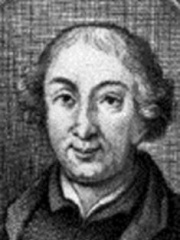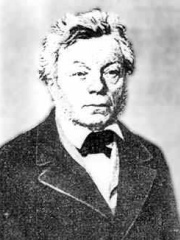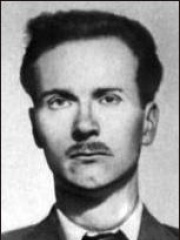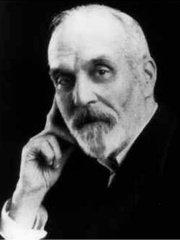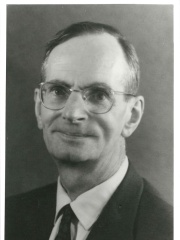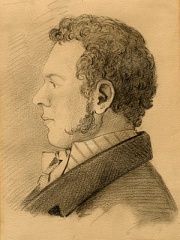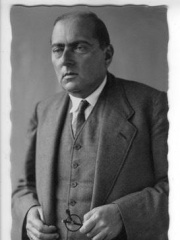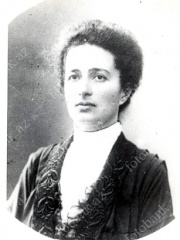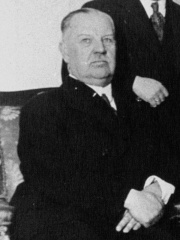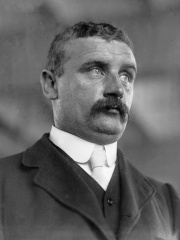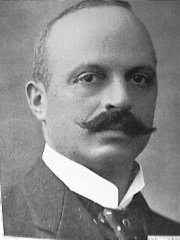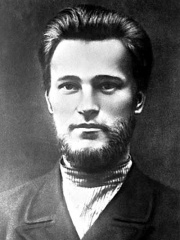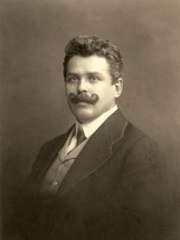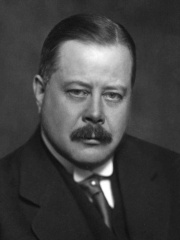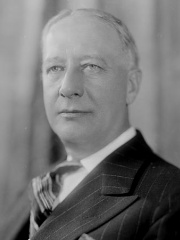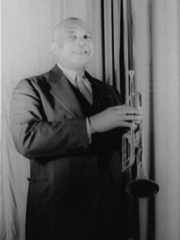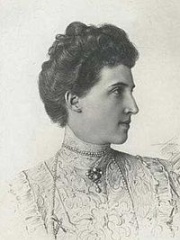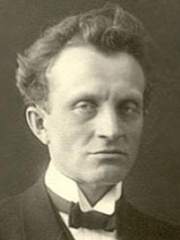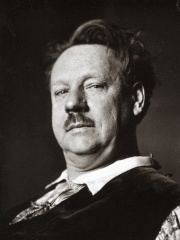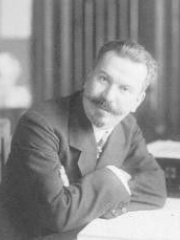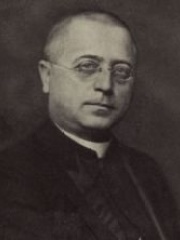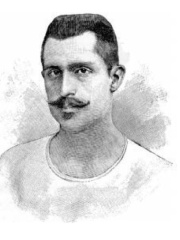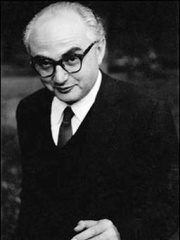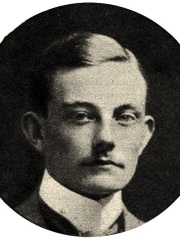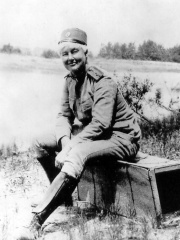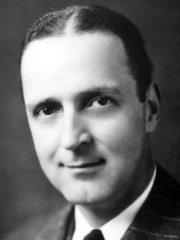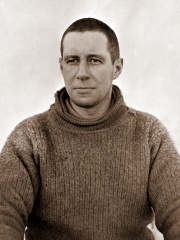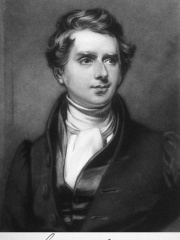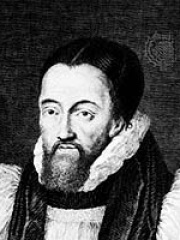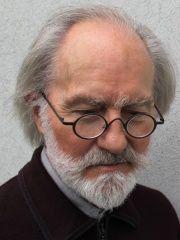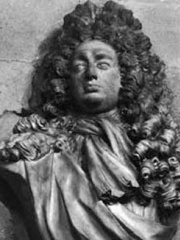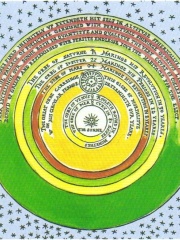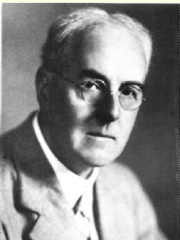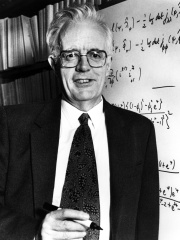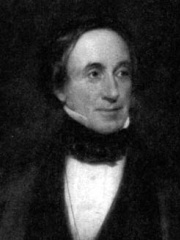MATHEMATICIAN
E. T. Whittaker
1873 - 1956
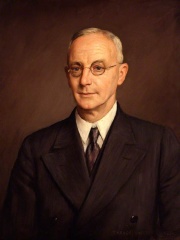
 E. T. Whittaker
E. T. Whittaker
Sir Edmund Taylor Whittaker (24 October 1873 – 24 March 1956) was a British mathematician, physicist, and historian of science. Whittaker was a leading mathematical scholar of the early 20th-century who contributed widely to applied mathematics and was renowned for his research in mathematical physics and numerical analysis, including the theory of special functions, along with his contributions to astronomy, celestial mechanics, the history of physics, and digital signal processing. Among the most influential publications in Whittaker's bibliography, he authored several popular reference works in mathematics, physics, and the history of science, including A Course of Modern Analysis (better known as Whittaker and Watson), Analytical Dynamics of Particles and Rigid Bodies, and A History of the Theories of Aether and Electricity. Read more on Wikipedia
Since 2007, the English Wikipedia page of E. T. Whittaker has received more than 195,453 page views. His biography is available in 17 different languages on Wikipedia (up from 15 in 2019). E. T. Whittaker is the 676th most popular mathematician (up from 717th in 2019), the 3,155th most popular biography from United Kingdom (up from 3,660th in 2019) and the 69th most popular British Mathematician.
Memorability Metrics
200k
Page Views (PV)
49.23
Historical Popularity Index (HPI)
17
Languages Editions (L)
4.93
Effective Languages (L*)
2.40
Coefficient of Variation (CV)
Page views of E. T. Whittakers by language
Over the past year E. T. Whittaker has had the most page views in the English wikipedia edition with 21,953 views, followed by Russian (2,464), and Spanish (1,959). In terms of yearly growth of page views the top 3 wikpedia editions are Danish (254.03%), Slovenian (132.53%), and Ukrainian (55.86%)
Among MATHEMATICIANS
Among mathematicians, E. T. Whittaker ranks 676 out of 1,004. Before him are Tommaso Ceva, Sofya Yanovskaya, Max Newman, Ian Stewart, Karl Georg Christian von Staudt, and John Cairncross. After him are Henry Dudeney, Vladimir Drinfeld, Alfréd Rényi, Georges de Rham, Bernt Michael Holmboe, and Otto Toeplitz.
Most Popular Mathematicians in Wikipedia
Go to all RankingsTommaso Ceva
1648 - 1737
HPI: 49.29
Rank: 670
Sofya Yanovskaya
1896 - 1966
HPI: 49.29
Rank: 671
Max Newman
1897 - 1984
HPI: 49.27
Rank: 672
Ian Stewart
1945 - Present
HPI: 49.26
Rank: 673
Karl Georg Christian von Staudt
1798 - 1867
HPI: 49.26
Rank: 674
John Cairncross
1913 - 1995
HPI: 49.23
Rank: 675
E. T. Whittaker
1873 - 1956
HPI: 49.23
Rank: 676
Henry Dudeney
1857 - 1930
HPI: 49.23
Rank: 677
Vladimir Drinfeld
1954 - Present
HPI: 49.21
Rank: 678
Alfréd Rényi
1921 - 1970
HPI: 49.20
Rank: 679
Georges de Rham
1903 - 1990
HPI: 49.20
Rank: 680
Bernt Michael Holmboe
1795 - 1850
HPI: 49.15
Rank: 681
Otto Toeplitz
1881 - 1940
HPI: 49.14
Rank: 682
Contemporaries
Among people born in 1873, E. T. Whittaker ranks 138. Before him are Hamida Javanshir, Carl Vaugoin, Charles P. Dixon, Charles Ruijs de Beerenbrouck, Nikolay Bauman, and Jan Janský. After him are Oscar von Sydow, Al Smith, W. C. Handy, Princess Louise Charlotte of Saxe-Altenburg, Rudolf Tobias, and Leo Slezak. Among people deceased in 1956, E. T. Whittaker ranks 141. Before him are Princess Marie Louise of Schleswig-Holstein, Touria Chaoui, George Bancroft, Teresa Feoderovna Ries, Sergei Vasilenko, and Jan Šrámek. After him are Benjamin Glazer, Panagiotis Paraskevopoulos, David Seymour, Albert Kluyver, Flora Sandes, and Preston Tucker.
Others Born in 1873
Go to all RankingsHamida Javanshir
SOCIAL ACTIVIST
1873 - 1955
HPI: 49.52
Rank: 132
Carl Vaugoin
POLITICIAN
1873 - 1949
HPI: 49.52
Rank: 133
Charles P. Dixon
TENNIS PLAYER
1873 - 1939
HPI: 49.46
Rank: 134
Charles Ruijs de Beerenbrouck
POLITICIAN
1873 - 1936
HPI: 49.44
Rank: 135
Nikolay Bauman
SOCIAL ACTIVIST
1873 - Present
HPI: 49.33
Rank: 136
Jan Janský
PHYSICIAN
1873 - 1921
HPI: 49.31
Rank: 137
E. T. Whittaker
MATHEMATICIAN
1873 - 1956
HPI: 49.23
Rank: 138
Oscar von Sydow
POLITICIAN
1873 - 1936
HPI: 49.22
Rank: 139
Al Smith
POLITICIAN
1873 - 1944
HPI: 49.18
Rank: 140
W. C. Handy
COMPOSER
1873 - 1958
HPI: 49.01
Rank: 141
Princess Louise Charlotte of Saxe-Altenburg
POLITICIAN
1873 - 1953
HPI: 48.98
Rank: 142
Rudolf Tobias
COMPOSER
1873 - 1918
HPI: 48.93
Rank: 143
Leo Slezak
SINGER
1873 - 1946
HPI: 48.92
Rank: 144
Others Deceased in 1956
Go to all RankingsPrincess Marie Louise of Schleswig-Holstein
POLITICIAN
1872 - 1956
HPI: 49.86
Rank: 135
Touria Chaoui
PILOT
1936 - 1956
HPI: 49.79
Rank: 136
George Bancroft
ACTOR
1882 - 1956
HPI: 49.74
Rank: 137
Teresa Feoderovna Ries
PAINTER
1874 - 1956
HPI: 49.50
Rank: 138
Sergei Vasilenko
COMPOSER
1872 - 1956
HPI: 49.33
Rank: 139
Jan Šrámek
POLITICIAN
1870 - 1956
HPI: 49.29
Rank: 140
E. T. Whittaker
MATHEMATICIAN
1873 - 1956
HPI: 49.23
Rank: 141
Benjamin Glazer
FILM DIRECTOR
1887 - 1956
HPI: 49.12
Rank: 142
Panagiotis Paraskevopoulos
ATHLETE
1875 - 1956
HPI: 49.12
Rank: 143
David Seymour
JOURNALIST
1911 - 1956
HPI: 48.88
Rank: 144
Albert Kluyver
CHEMIST
1888 - 1956
HPI: 48.74
Rank: 145
Flora Sandes
MILITARY PERSONNEL
1876 - 1956
HPI: 48.66
Rank: 146
Preston Tucker
ENGINEER
1903 - 1956
HPI: 48.50
Rank: 147
In United Kingdom
Among people born in United Kingdom, E. T. Whittaker ranks 3,155 out of 8,785. Before him are Cilla Black (1943), Mark Hughes (1963), Lawrence Oates (1880), John Sims (1749), Francis Godwin (1562), and John Cairncross (1913). After him are Henry Dudeney (1857), Roy Harper (1941), Una Stubbs (1937), James Milner (1986), Kathleen McKane Godfree (1896), and Michael Ball (1962).
Others born in United Kingdom
Go to all RankingsCilla Black
SINGER
1943 - 2015
HPI: 49.24
Rank: 3,149
Mark Hughes
SOCCER PLAYER
1963 - Present
HPI: 49.24
Rank: 3,150
Lawrence Oates
MILITARY PERSONNEL
1880 - 1912
HPI: 49.24
Rank: 3,151
John Sims
BIOLOGIST
1749 - 1831
HPI: 49.24
Rank: 3,152
Francis Godwin
HISTORIAN
1562 - 1633
HPI: 49.23
Rank: 3,153
John Cairncross
MATHEMATICIAN
1913 - 1995
HPI: 49.23
Rank: 3,154
E. T. Whittaker
MATHEMATICIAN
1873 - 1956
HPI: 49.23
Rank: 3,155
Henry Dudeney
MATHEMATICIAN
1857 - 1930
HPI: 49.23
Rank: 3,156
Roy Harper
MUSICIAN
1941 - Present
HPI: 49.23
Rank: 3,157
Una Stubbs
ACTOR
1937 - 2021
HPI: 49.23
Rank: 3,158
James Milner
SOCCER PLAYER
1986 - Present
HPI: 49.22
Rank: 3,159
Kathleen McKane Godfree
TENNIS PLAYER
1896 - 1992
HPI: 49.22
Rank: 3,160
Michael Ball
ACTOR
1962 - Present
HPI: 49.21
Rank: 3,161
Among MATHEMATICIANS In United Kingdom
Among mathematicians born in United Kingdom, E. T. Whittaker ranks 69. Before him are David Gregory (1659), Thomas Digges (1546), John Lennox (1943), Max Newman (1897), Ian Stewart (1945), and John Cairncross (1913). After him are Henry Dudeney (1857), Lewis Fry Richardson (1881), Lady Byron (1792), James Ivory (1765), David Cox (1924), and William Hopkins (1793).
David Gregory
1659 - 1708
HPI: 49.71
Rank: 63
Thomas Digges
1546 - 1595
HPI: 49.59
Rank: 64
John Lennox
1943 - Present
HPI: 49.34
Rank: 65
Max Newman
1897 - 1984
HPI: 49.27
Rank: 66
Ian Stewart
1945 - Present
HPI: 49.26
Rank: 67
John Cairncross
1913 - 1995
HPI: 49.23
Rank: 68
E. T. Whittaker
1873 - 1956
HPI: 49.23
Rank: 69
Henry Dudeney
1857 - 1930
HPI: 49.23
Rank: 70
Lewis Fry Richardson
1881 - 1953
HPI: 48.93
Rank: 71
Lady Byron
1792 - 1860
HPI: 48.89
Rank: 72
James Ivory
1765 - 1842
HPI: 48.67
Rank: 73
David Cox
1924 - 2022
HPI: 48.45
Rank: 74
William Hopkins
1793 - 1866
HPI: 48.43
Rank: 75
